The superbly preserved Villa Romano El Ruedo in Córdoba province shows the visitor the style in which a rich Roman landlord lived in southern Spain.
By Nick Nutter | Updated 14 Sep 2022 | Córdoba | Places To Go |
Login to add to YOUR Favourites or Read Later
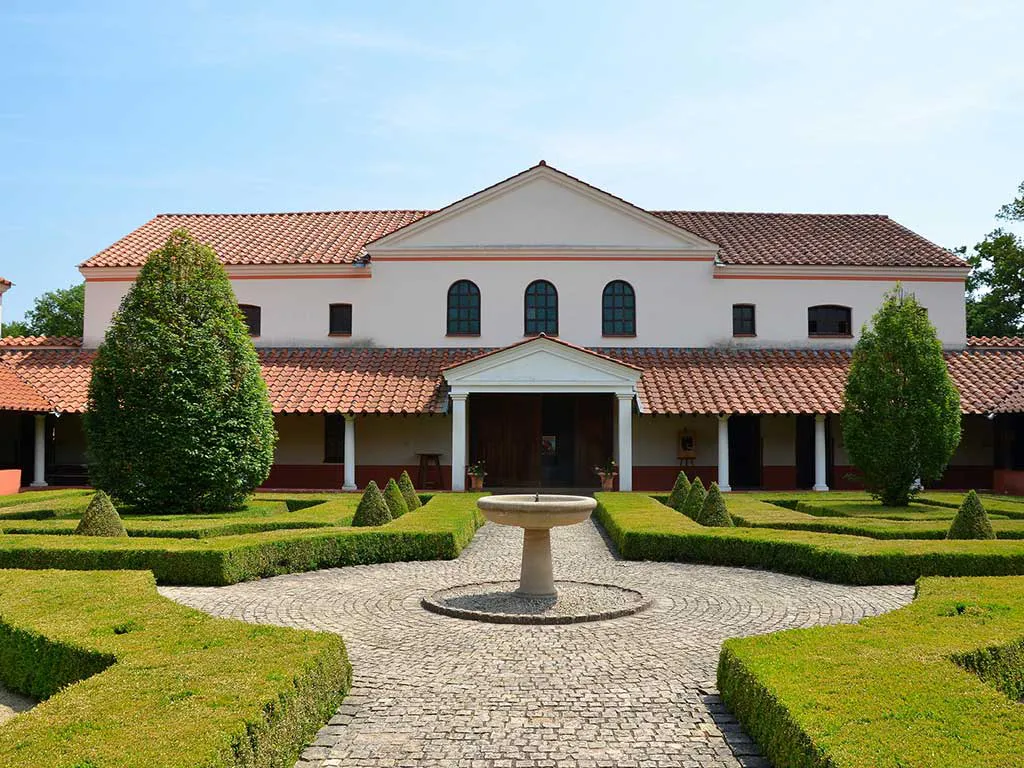
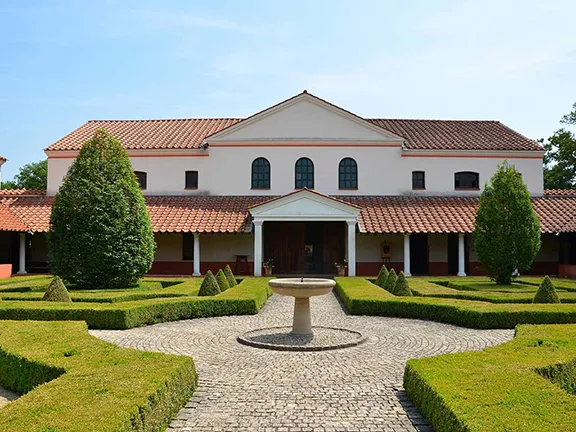
Roman Villa Reconstruction
Villa Romano ‘El Ruedo’ at Almedinilla in Córdoba province, Andalucia, is one of the largest Roman villas in the Iberian Peninsula. It dates from the 1st century to the 7th century AD and was occupied first by the Romans and then through the Visigoth period.
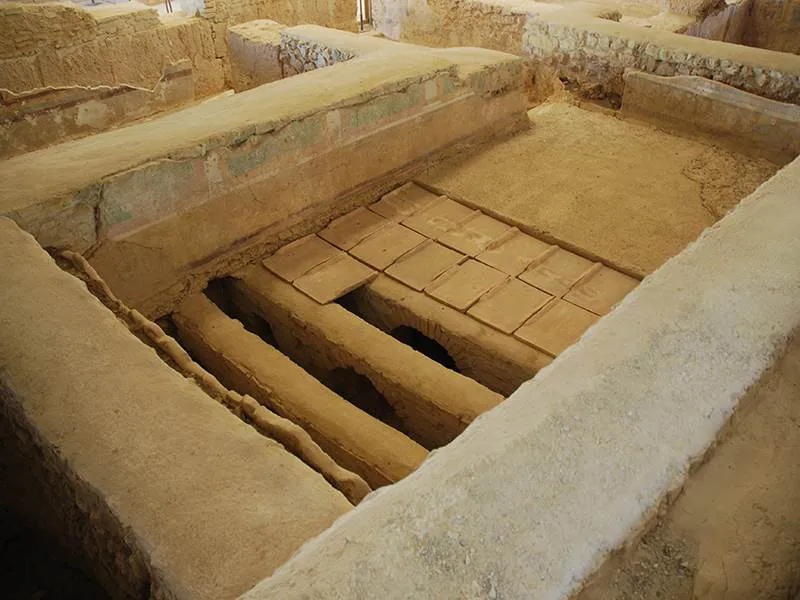
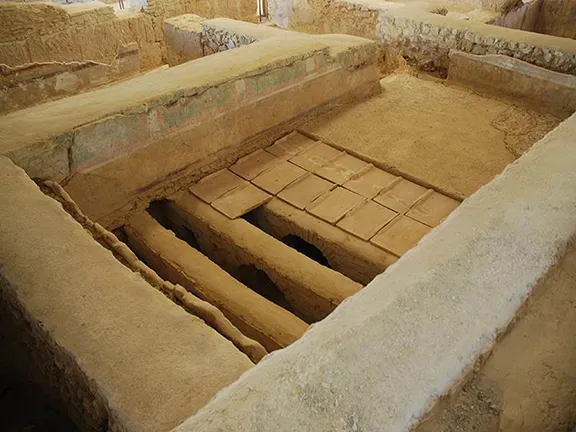
Baths area El Ruedo
There are two distinct areas, the ‘Pars Urbana’ which contained a magnificent residence occupied by the owner of the villa and a ‘Pars Rustica’ that contains all the farming buildings.
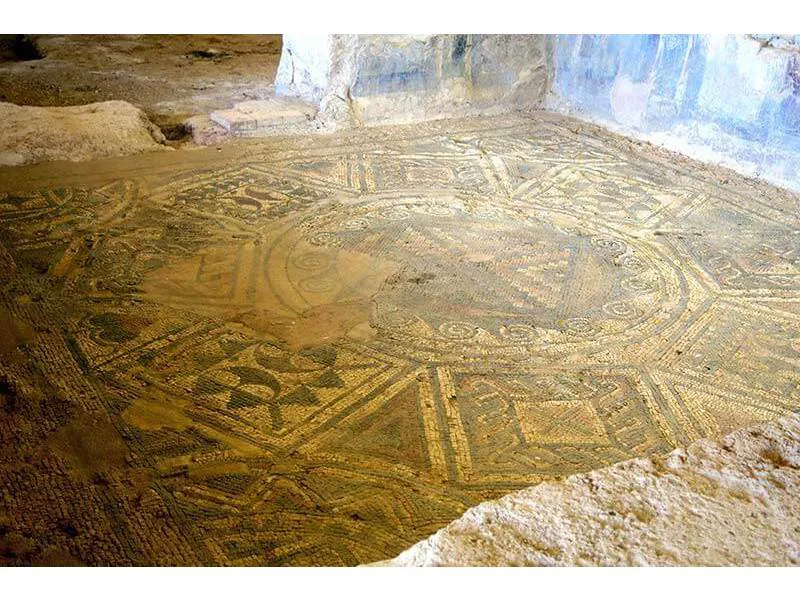
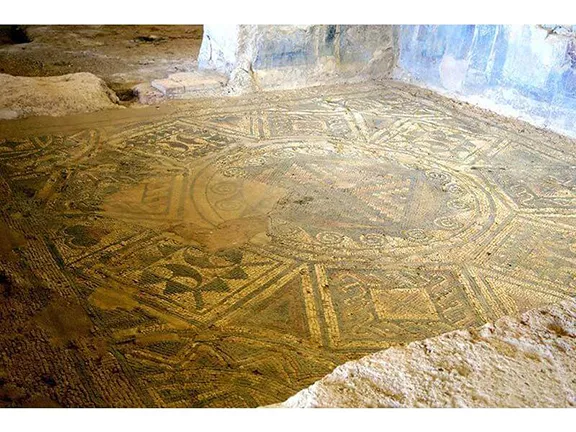
Elaborate mosaics El Ruedo
The site illustrates how the Romans occupied an area. Towns were established, outside of which were villas, similar although normally smaller than El Ruedo. The villas were the equivalent of modern day cortijos and the land attached to the villa was heavily cultivated, normally by the indigenous people or slaves. Produce from the cortijos made its way to the town where there would be a market. Some of the produce was consumed in the town, some was exported into other parts of the Roman Empire.
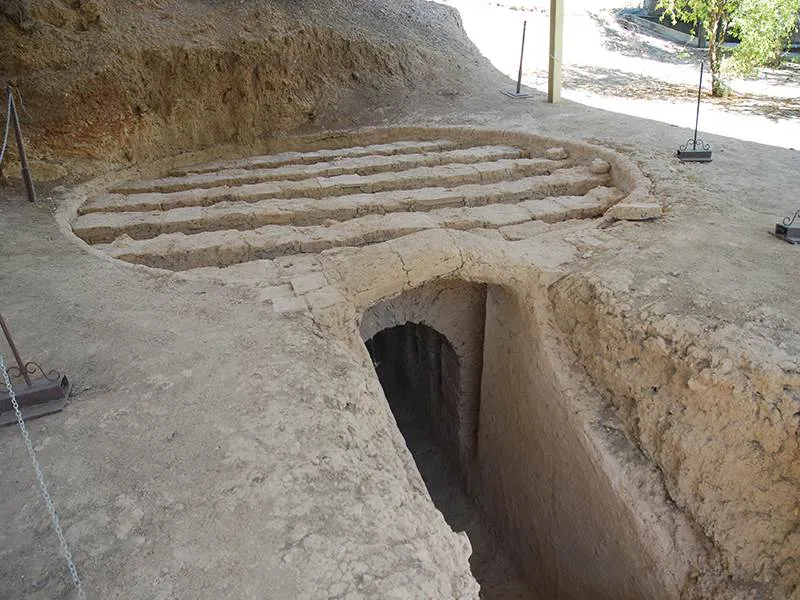
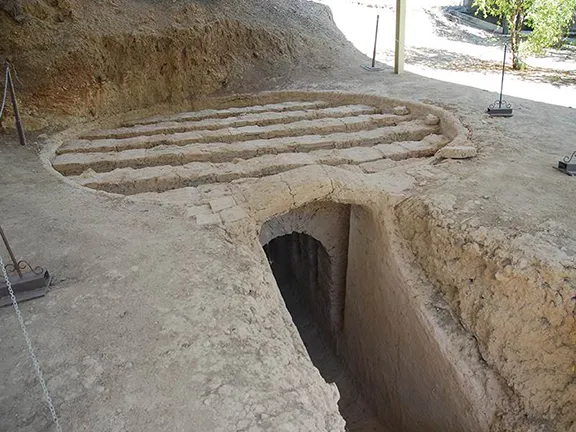
Ceramic kiln El Ruedo
This large villa has well preserved reception areas, a triclinium (dining area), a patio with pool, various living rooms and bedrooms richly decorated with mosaics and painted walls and a baths area.
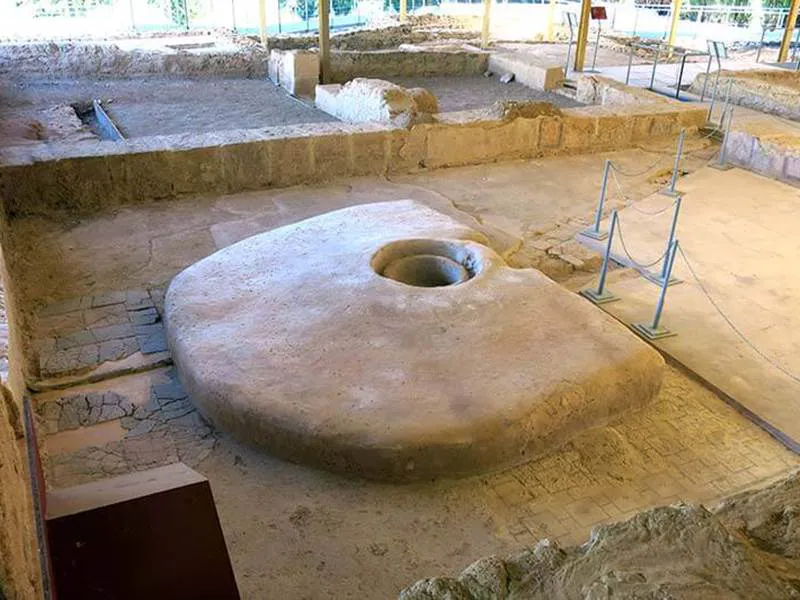
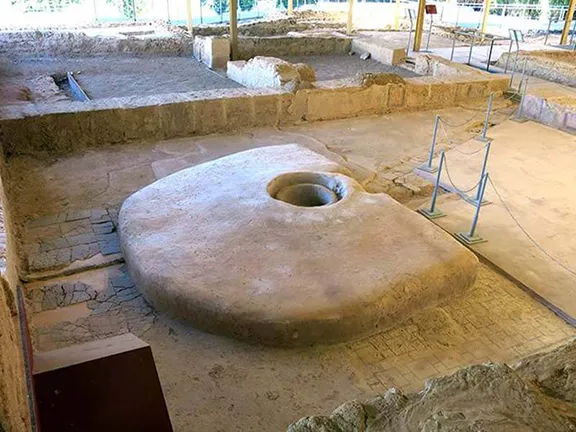
Triclinium El Ruedo
El Ruedo was concerned with the production of olive oil, wine and cereals. In the farm buildings were found silos for grain, a wine press and an olive mill as well as warehouses to store wine and oil in amphorae fired in the huge kiln behind the villa.
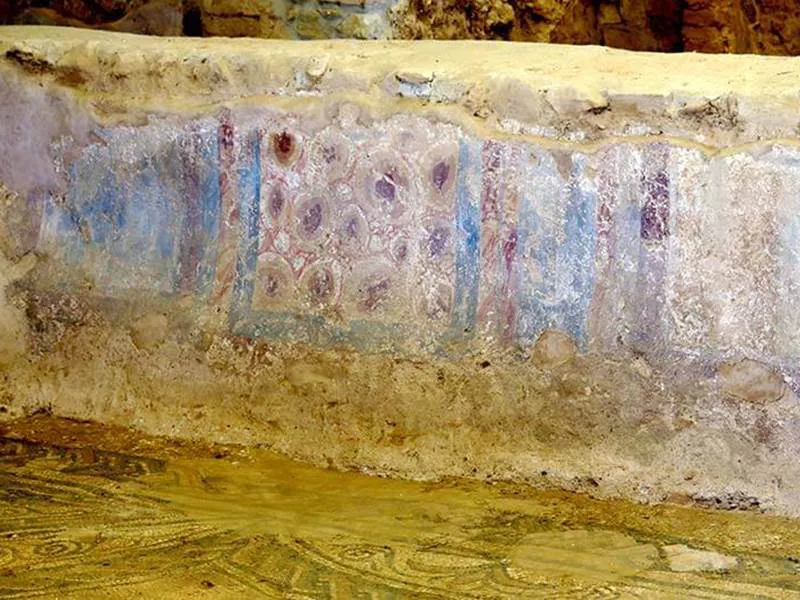
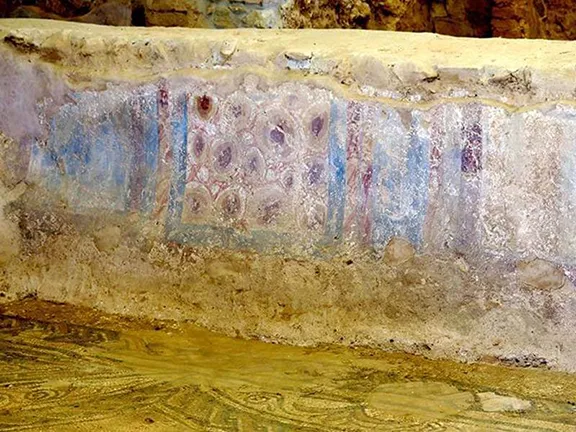
Wall decoration El Ruedo
Construction of El Ruedo occurred in four phases.
Phase 1 dates from the first half of the 1st century. The villa was built around a patio.
Phase 2 spans the 2nd century when the peristyle (covered porch) was built with a gallery supported on columns. During this phase the agricultural buildings to the east of the villa were constructed.
Phase 3, between the end of the 3rd century and the beginning of the 5th century saw the villa at its most splendid with construction of the nymphaeum (sanctuary dedicated to water nymphs) and lectus triclinaris (reclining seat in the triclinium) , the hipocaustum (underfloor heating system) and the possible praefurnium (private bathing area), the modifications of the cistern and the pictorial decoration of all the rooms that open to the patio, in the central and western sectors of the Villa. The peristyle was again restructured. The magnificent statues of hypnos, hermaphrodite and others now displayed in the museum, all derive from this period.
During Phase 4, the middle of the 5th century, a bread oven and a metal furnace were made and some of the water piping was renewed.
A necropolis was situated west and north of the villa. It contained over 400 graves containing the remains of the peasant population that farmed the villa between the 4th and 7th centuries. The graves were single or double and contained simple grave goods. It is thought that the traditional pagan rites were practised despite the necropolis being used after the Christianisation of the Roman Empire. Only one engraving of a cross (the cross as a Christian symbol began to be used in the 4th century AD) was found.
Today the necropolis is largely beneath the road into modern day Almedinilla.
For opening times of Villa Romano El Ruedo click here